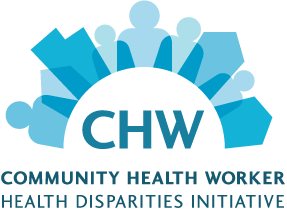NHLBI-PAHO Collaboration to Promote Heart Health in the Americas
Outside of the United States, the Community Health Worker Health Disparities Initiative has been implemented in low-resource communities in Argentina, Chile, and Guatemala. These projects were implemented in partnership with the Pan American Health Organization (PAHO) from 2007 to 2010.
Overview
According to the PAHO, ischemic heart disease (IHD) is the leading cause of death in the Americas. In 2007, IHD caused 662,011 deaths (13.0 percent of all deaths) in the United States, and 255,586 (9.6 percent of all deaths) in Latin America and the Caribbean.1
Evidence has also revealed increased cardiovascular disease (CVD) risk factors, including overweight/obesity, hypertension, smoking, diabetes, and lack of physical activity throughout the Americas. To address this public health challenge, in October 2005 a NHLBI/PAHO Joint Symposium entitled “Lay Health Workers/Promotores de Salud: Mobilizing Communities to Improve Cardiovascular Health in the Americas” was held in Santiago, Chile.
The objective of the symposium was to assess the use of lay health workers (promotores de salud) in community-based interventions to promote cardiovascular health across the Americas. The symposium brought together 20 countries from PAHO’s CARMEN (Collaborative Action for Risk Factor Prevention & Effective Management of Non Communicable Diseases) Network, NHLBI community outreach projects implemented in the United States, and individuals with field experience in the community health worker (CHW) model.
Following the workshop in Chile, the NHLBI and PAHO funded three projects to plan, implement, and evaluate interventions led by trained CHWs to promote heart health in low-resource communities in Argentina, Chile, and Guatemala (2007 to 2010). Project teams trained on the use of the NHLBI’s Your Heart, Your Life (Su corazón, su vida) manual used qualitative methods to adapt the manual to the realities of each site. Also, a pre- and post-test was used to measure changes in heart health knowledge, attitudes, and behaviors among trained CHWs and community members who participated in the interventions.
The projects were implemented in two phases. Phase I involved adapting the manuals, partnership engagement, and recruitment and training of community health workers. Phase II involved implementing strategies to conduct sessions of the manual in community and clinic setting. Qualitative methods were used to identify promising community engagement and partnership approaches to ensure sustainability.
Following the adaptation of Your Heart, Your Life manual by each site, the projects were implemented via four strategies, with different sites implementing different strategies, either alone or in combination.
- Strategy 1 – Train-the-Trainer: CHWs are trained on the curriculum so they can increase their heart health knowledge and have greater confidence in their teaching skills to deliver the material in their communities.
- Strategy 2a – Community Education: CHWs deliver the curriculum to community members attending group education sessions.
- Strategy 2b – Community Education with Screening: CHWs deliver the curriculum to community participants, conduct clinical screening of participants prior to the start of the program, and refer individuals at risk for heart disease to community clinics.
- Strategy 3 – Lifestyle and Clinical Management: CHWs affiliated with community clinics deliver the curriculum to clinic patients, targeting those who already have been identified as being at high risk for heart disease. After delivering the curriculum, CHWs conduct periodic follow-ups of participating patients and record clinical measures.
Combined Key Results/Findings
- The projects demonstrated the feasibility of adapting CHW training tools designed for Hispanic/Latino audiences in the United States. Nearly 100 CHWs were trained in the three projects; 39 of the trained CHWs implemented strategies in their communities, and the remaining CHWs were lost to attrition.
- Trained CHWs conducted a variety of community outreach activities, such as health fairs, cooking demonstrations, walking clubs, and door-to-door information dissemination, during the life of the projects, and they reached thousands of community members.
- Heart healthy knowledge, attitudes, and behaviors significantly increased among trained CHWs and among community members who participated in the CHW-led interventions.
- The three projects identified methods to mobilize community resources and engage community members to adopt healthy behaviors.
- In Mar del Plata, Argentina, 12 trained CHWs participated in community outreach activities, including health fairs, referrals to screening services at a community clinic, cooking demonstrations, walking clubs, and puppet shows for children. In 2010 and 2011, the project received grants from the Argentinean Department of Health to disseminate health information via trained CHWs, reaching over 8,000 people each year.
- In Chillán Viejo, Chile, 16 trained CHWs reached 600 community members through education sessions in 18 different comunas (communities). The trained CHWs worked with project teams to incorporate their group as a nonprofit organization, making it eligible to apply for community development funds from the municipality to continue their education and outreach activities.
- In Mixco, Guatemala, it was found that most clinical outcomes, such as blood pressure and overall CVD risk level, moved in the desired direction in 79 patients who participated in six sessions of the curriculum. The exception was body mass index (BMI), which may require a more intense intervention.
- The results of the projects suggest that trained CHWs are able to provide heart health information and influence community members to adopt heart healthy behaviors.
1 Pan American Health Organization. (n.d.). Regional Health Observatory: Premature NCD Deaths.
Last Updated: June 2014






